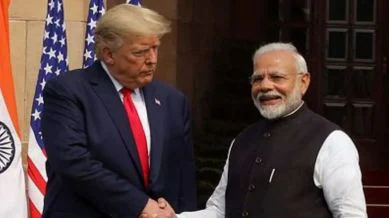Subtitle:
Former US President signs sweeping order targeting nations maintaining strong economic links with Moscow
News Report:
In a bold and controversial move, former U.S. President Donald Trump has signed an executive order doubling tariffs on Indian goods to 50%, citing India’s continued trade relationship with Russia as the reason behind the economic penalty.
The order, described by Trump as a “necessary measure to protect American interests,” directly targets countries that have not significantly reduced their commercial ties with Russia amid the ongoing geopolitical conflict. India, a key player in global trade and a strategic partner of both Russia and the United States, now finds itself at the centre of Trump’s revived economic pressure campaign.
According to the document released by Trump’s office, the 50% tariff will apply to a wide range of Indian imports, from textiles and auto components to chemicals and electronics. Trump justified the increase by accusing India of “prioritizing its energy and defense ties with Russia over global stability.”
The announcement has sparked sharp reactions in both Washington and New Delhi. While Indian officials have yet to respond officially, sources suggest backchannel diplomatic efforts are underway to defuse the tension and seek clarification on the scope and duration of the tariffs.
Trade experts say the move could severely impact India’s export-driven industries, many of which rely on the U.S. market for a significant portion of their revenue. The doubling of tariffs is also expected to raise prices for U.S. consumers, particularly in sectors where Indian goods dominate.
This is not the first time Trump has wielded tariffs as a geopolitical tool. During his previous term, he used trade barriers extensively to renegotiate deals and apply pressure on allies and adversaries alike. However, the sudden escalation against India—a democratic ally—has raised eyebrows and reignited concerns about a return to aggressive protectionism.
With the global economy still navigating inflation and supply chain recovery, the timing of the decision adds further uncertainty to already fragile markets. Many are now watching closely for India’s next move, as well as any potential response from current U.S. officials, who have yet to comment on the order.
As tensions rise, one thing is clear: the latest tariff hike signals a renewed phase of high-stakes economic diplomacy—one that could reshape the contours of U.S.-India relations in the months ahead.

